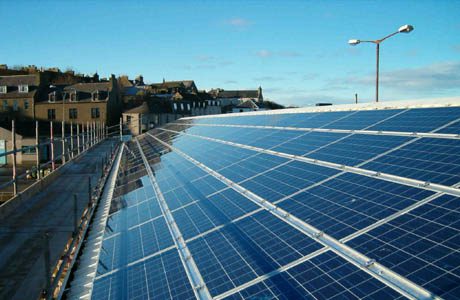
Scottish Renewables’ first Solar Conference will be held in association with the Scottish Institute for Solar Energy Research (SISER) in Edinburgh on September 6 and 7.
SISER brings together expertise from 10 Scottish Universities and the Edinburgh-based UK Astronomy Technology Centre to support the solar industry.
Stephanie Clark, Policy Manager at Scottish Renewables, said: “Clean, affordable energy is a huge prize with a global market, and the work which is being done in Scotland is helping contribute to that aim.
“Scottish Renewables represents 280 organisations working in renewable energy in Scotland, so it’s only natural that we should partner with SISER to hold our first Solar Conference.”
Delegates at the event will hear from speakers including John Forster, Chairman of the Solar Trade Association Scotland and Sue Roaf, Professor of Architectural Engineering at Heriot Watt University on topics including:
The barriers which are currently holding solar back
Heat, electricity and the future of solar storage
The role of solar in developing sustainable buildings
How communities and industry can work together to develop solar power schemes.
Professor Graeme Cooke, Director of SISER, said: “This conference will showcase the breadth of solar energy research and development currently being undertaken in Scotland.”
The conference will also feature a poster exhibition, where students working in the sector will be able to showcase their ideas to industry and fellow academics.
Details of some of the projects to be presented are included below:
New materials, new possibilities
Perovskites offer a holy grail for solar – more efficient panels, made with cheaper materials.
The rapid rise of the material since 2009 has been unprecedented.
Professor Neil Robertson of the University of Edinburgh has partnered with the UK Supersolar Hub to develop new materials to further reduce the cost of perovskite cells.
Solar fuels via engineering innovation
Large-scale, economic ‘photoconversion’ of carbon dioxide into hydrocarbon-based fuels is a formidable scientific and technical challenge. Solar researchers at Heriot-Watt University are working with chemical engineers and chemists to engineer reactors which can make this process happen efficiently. More detail.
Solar on the moon
Heriot-Watt University’s Dr Nick Bennett helped the European Space Agency – the EU’s NASA – test how radiation in space affects panels.
He’s now working to turn lunar dust, known as rhegolith, into solar PV panels to find out if the process could be used to power a future moon base.
Protecting solar from Scotland’s wild winters
Solar thermal panels provide green heat to cut carbon emissions and fuel bills – but they don’t like freezing conditions.
Dr Tadhg O’Donovan of Heriot-Watt University and Scottish SME Soltropy designed a system which uses foam to absorb the pressure created as ice develops. The company is now marketing the system.
Satellites, solar and a super-charged energy beam
Dundee University physicist Dr Adrian Quarterman is developing lasers which use semi-conductors to convert solar energy into beams of light.
Satellites fitted with the devices would then ‘harvest’ solar power and beam it back to Earth.







